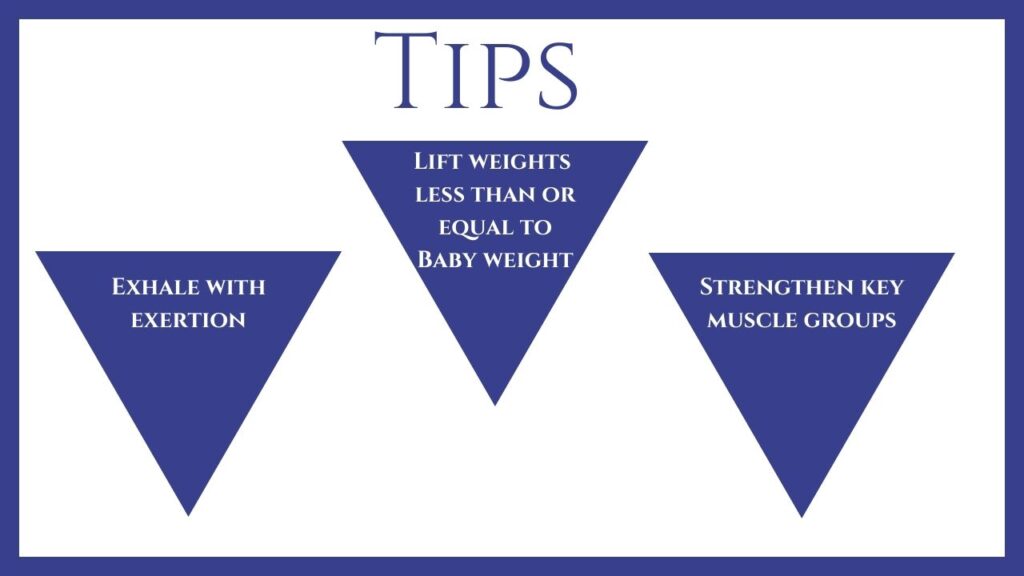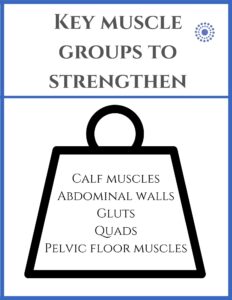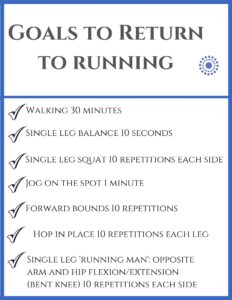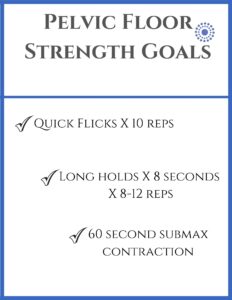Postpartum return to running and impact exercises:
Are you ready?
Congratulations on the birth of your baby! How will you know when you can start exercising again?
After having a baby, returning to physical exercise and high impact exercises, such as running, is a high priority for many active women. Until recently, there were no published guidelines for a safe return to exercise. However, in March 2019, a group of medical providers created new guidelines for professionals to help women return to high-impact exercises safely (Goom et al., 2019). At Carolina Pelvic Health Center, Inc. we strive to help all postpartum women return to exercise safely.
The postpartum phase is a time of recovery and regaining strength while enjoying your new baby. Your body has gone through many changes throughout the pregnancy, and now, it is going through another change in the early postpartum phase (0-12 weeks). This is now commonly known as the “4th trimester.” Getting back to exercise is an important part of healing both physically and emotionally. However, jumping right back into your old routine may not be the best for your changing body. The new guidelines proposed by Goom et al. (2019) recommend that women wait twelve weeks before running. This allows the body time for healing and rebuilding strength, flexibility, range of motion, and improving mental health to endure physical fitness. That does not mean you shouldn’t exercise in the first three months postpartum, you can actually start exercising safely to promote circulation, healing, and mental health soon after the baby arrives. A pelvic floor therapist can guide you in your early postpartum phase to help you determine which exercises are best. For general guidelines check out this illustration for exercise during the fourth trimester.

Goals for 0-6 weeks postpartum:
Enhance circulation to promote healing
The body needs blood flow to help tissues heal from the birth of your baby, regardless of the method of delivery. This is a time for bonding with your baby, recovering from 10 months of pregnancy and your recent delivery. If you are breastfeeding, stay hydrated, eat a nutritious diet, and get lots of rest.
 However, there are a few simple exercises you can start immediately to get you moving:
However, there are a few simple exercises you can start immediately to get you moving:
- Abdominal Breathing: try diaphragmatic breathing for 5-10 minutes 1-2 x day
- Gentle pelvic floor strengthening and relaxation exercises: 10 reps 1-3 x day
- Basic core exercises: avoid crunches, sits ups, and planks
- Walking: take it slow and listen to your body. Aim for 5-10 minutes 1-3 x day.
- Rest, elevate your legs, ankle pumps and circles
- Ice the areas that are healing. (See Perineal Scar Blog)
Goals for weeks 6-12 postpartum:
Low impact exercise to build endurance and strength

During this phase of recovery, you may find that you are more comfortable and want to get back to more energetic exercises. Remember, your body is still healing and often ‘less is more!’ Goom et al. (2019) recommend focusing on low-impact aerobic exercises including walking, swimming, elliptical, or cycling, if comfortable on the perineum. You are already lifting weights daily by carrying your growing baby. You can incorporate simple strengthening into your day with child care activities, such as squats while holding the baby.
Goals for weeks 12+:
Return to impact exercises, including running
Before you lace up your running shoes consider seeing a pelvic floor therapist if you have any of the problems below. The new guidelines by Goom et al. (2019) suggest that all women should have a pelvic floor assessment prior to returning to running or any other impact activities.
How do you know that you are ready to pound the pavement?
Check out the screening tool below, established by Goom et al. (2019), to determine if you have the strength, flexibility, balance, and dynamic control prior to returning to running and impact activities.

In addition, the guidelines recommend that you have full pelvic floor strength such that you can do the following pelvic floor exercises:

If you can do all those fabulous moves then you are ready to return to running and impact fitness activities! If you had pain, leakage, pressure, heaviness, or lacked strength in your hips or core, or simply have questions about how your body is moving, then you are a great candidate for pelvic floor physical therapy!
Call us today @ 919.571.9912 to schedule your appointment to return to fitness safely and with confidence!
References:
Goom, Tom & Donnelly, Grainne & Brockwell, Emma. (2019). Returning to running postnatal – guidelines for medical, health and fitness professionals managing this population. 10.13140/RG.2.2.35256.90880/2. PDF

